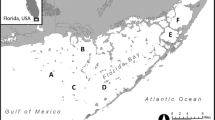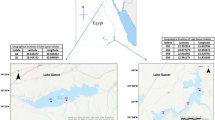Abstract
One approach in toxicity testing using microalgae is to assess the modulation of light energy absorbed as a result of exposure to contaminants. In this study, four strains of microalgae were isolated to obtain a variety of taxa for testing from sites receiving various levels of environmental stressors around Christchurch, New Zealand. The strains were characterized by partially sequencing rbcL, a routinely used gene in plant phylogenetics with a large existing database of strains. Based on morphological observation and gene sequences, the strains were identified as Chlorella sp., Neochloris sp., and Choricystis minor. The isolates were exposed to the herbicide glyphosate and the metal zinc, and their responses were measured using the ToxY-PAM system. Chlorella sp. was the most sensitive. Two strains of Choricystis minor were isolated from different ponds in an effluent gradient at a sewage treatment plant. Analysis of variance indicated that the isolate from the least contaminated pond was more sensitive to zinc (although regression analysis did not show this result). This suggests that the selective pressure exerted on algal strains by a contamination gradient over short a distance is detectable by both genetic and physiological methods, with implications for sourcing appropriate indicator organisms from the environment.





Similar content being viewed by others
References
Amuda OS, Giwa AA, Bello IA (2007) Removal of heavy metal from industrial wastewater using modified activated coconut shell carbon. Biochem Eng J 36:174–181. doi:10.1016/j.bej.2007.02.013
Awasthi M, Rai LC (2004) Adsorption of nickel, zinc and cadmium by immobilized green algae and cyanobacteria: a comparative study. Ann Microbiol 54:257–267
Baas Becking LGM (1934) Geobiologie of inleiding tot de milieukunde. W.P. Van Stockum & Zoon, The Hague
Biggs BJF, Kilroy C (2000) Stream periphyton monitoring manual. NIWA, Christchurch, New Zealand
de Cambiaire JC, Otis C, Lemieux C, Turmel M (2006) The complete chloroplast genome sequence of the chlorophycean green alga Scenedesmus obliquus reveals a compact gene organization and a biased distribution of genes on the two DNA strands. BMC Evol Biol 6:37
Ettl H, Gärtner G (1995) Syllabus der Boden-, Luft-, und Flechtenalgen. Gustav Fischer Verlag, Stuttgart
Fawley MW, Fawley KP, Buchheim MA (2004) Molecular diversity among communities of freshwater microchlorophytes. Microb Ecol 48:489–499. doi:10.1007/s00248-004-0214-4
Finlay BJ (2002) Global dispersal of free-living microbial eukaryote species. Science 296:1061–1063. doi:10.1126/science.1070710
Foissner W (2006) Biogeography and dispersal of micro-organisms: a review emphasizing protists. Acta Protozool 45:111–136
Friedl T (1995) Inferring taxonomic positions and testing genus level assignments in coccoid green lichen algae: a phylogenetic analysis of 18S ribosomal RNA sequences from Dictyochloropsis reticulata and from members of the genus Myrmecia (Chlorophyta, Trebouxiophyceae cl. nov.). J Phycol 31:632–639. doi:10.1111/j.1529-8817.1995.tb02559.x
Genty B, Harbinson J, Baker NR (1989) Relationship between the quantum efficiencies of the photosystem-I and photosystem-II in pea leaves. Plant Physiol 90:1029–1034. doi:10.1104/pp.90.3.1029
Juneau P, Dewez D, Matsui S, Kim S, Popovic R (2001) Evaluation of different algal species sensitivity to mercury and metolachlor by PAM-fluorometry. Chemosphere 45:589–598. doi:10.1016/S0045-6535(01)00034-0
Juneau P, El Berdey A, Popovic R (2002) PAM fluorometry in the determination of the sensitivity of Chlorella vulgaris, Selenastrum capricornutum, and Chlamydomonas reinhardtii to copper. Arch Environ Contam Toxicol 42:155–164. doi:10.1007/s00244-001-0027-0
Kociolek JP, Spaulding SA (2000) Freshwater diatom biogeography. Nova Hedwigia 71:223–241
Krause GH, Weis E (1984) Chlorophyll fluorescence as tool in plant physiology II. Interpretation of fluorescence signal. Photosynthesis Res 5:139–157. doi:10.1007/BF00028527
Mallick N, Mohn FH (2003) Use of chlorophyll fluorescence in metal-stress research: a case study with the green microalga Scenedesmus. Ecotoxicol Environ Safety 55:64–69. doi:10.1016/S0147-6513(02)00122-7
Matson CW, Lambert MM, McDonald TJ, Autenrieth RL, Donnelly KC, Islamzadeh A, Politov DI, Bickham JW (2006) Evolutionary toxicology: population-level effects of chronic contaminant exposure on the marsh frogs (Rana ridibunda) of Azerbaijan. Environ Health Perspect 114:547–552
Maul JE, Lilly JW, Cui L, de Pamphilis, CW, Miller, W, Harris, EH, Stern, DB (2002) The Chlamydomonas reinhardtii plastid chromosome: islands of genes in a sea of repeats. Plant Cell 14:2659–2679. doi:10.1105/tpc.006155
Müller J, Friedl T, Hepperle D, Lorenz M, Day JG (2005) Distinction between multiple isolates of Chlorella vulgaris (Chlorophyta, Trebouxiophyceae) and testing for conspecificity using amplified fragment length polymorphism and ITS DNA sequences. J Phycol 41:1236–1247. doi:10.1111/j.1529-8817.2005.00134.x
Nash SMB, Schreiber U, Ralph PJ, Müller JF (2005a) The combined SPE: Tox-Y PAM phytotoxicity assay; application and appraisal of a novel biomonitoring tool for the aquatic environment. Biosens Bioelectron 20:1443–1451. doi:10.1016/j.bios.2004.09.019
Nash SMB, Quayle PA, Schreiber U, Müller JF (2005b) The selection of a model microalgal species as biomaterial for a novel aquatic phytotoxicity assay. Aquat Toxicol 72:315–326. doi:10.1016/j.aquatox.2005.02.004
Novis PM, Hoham RW, Beer T, Dawson M (2008a) Two snow species of the quadriflagellate green alga Chlainomonas (Chlorophyta, Volvocales): ultrastructure amd phylogenetic position within the Chloromonas clade. J Phycol 44:1001–1012. doi:10.1111/j.1529-8817.2008.00545.x
Novis PM, Beer T, Vallance J (2008b) New records of microalgae from the New Zealand alpine zone, and their distribution and dispersal. NZ J Botany 46:347–366
Nozaki H, Misumi O, Tsuneyoshi K (2003) Phylogeny of the quadriflagellate Volvocales (Chlorophyceae). Mol Phylogenet Evol 29:58–66. doi:10.1016/S1055-7903(03)00089-7
OECD (2006) Test No. 201. Alga, growth inhibition test. OECD guidelines for the testing of chemicals, section 2: effects on biotic systems
Pellon A, Benitez F, Frades J, Garcia L, Cerpa A, Alguacil FJ (2003) Using microalgae Scenedesmus obliquus in the removal of chromium present in plating wastewaters. Rev Metalurg 39:9–16
Ralph PJ, Smith RA, Macinnis-Ng CMO, Seery CR (2007) Use of fluorescence-based ecotoxicological bioassays in monitoring toxicants and pollution in aquatic systems: review. Tox Environ Chem 89:589–607. doi:10.1080/02772240701561593
Rippka R, Deruelles J, Waterbury JB, Herdman M, Stanier RY (1979) Generic assignment, strain history, and properties of pure cultures of Cyanobacteria. J Gen Microbiol 111:1–61
Schreiber U (2001) Dual-channel photosynthesis yield analyzer Tox-Y PAM: handbook of operation. Heinz Walzer GmbH, Germany
Schreiber U, Mueller JF, Haugg A, Gademann R (2002) New type of dual-channel PAM chlorophyll fluorometer for highly sensitive water toxicity biotests. Photosynth Res 74:317–330. doi:10.1023/A:1021276003145
Tamura K, Dudley J, Nei M, Kumar S (2007) MEGA4: Molecular Evolutionary Genetics Analysis (MEGA) software version 4.0. Mol Biol Evol 24:1596–1599. doi:10.1093/molbev/msm092
Theodorakis CW, Lee KL, Adams SM, Law CB (2006) Evidence of altered gene flow, mutation rate, and genetic diversity in redbreast sunfish from a pulp-mill-contaminated river. Environ Sci Technol 40:377–386. doi:10.1021/es052095g
Thompson JD, Gibson TJ, Plewniak F, Jeanmougin F, Higgins DG (1997) The ClustalX Windows interface: flexible strategies for multiple sequence alignment aided by quality analysis tools. Nucleic Acids Res 24:4876–4882. doi:10.1093/nar/25.24.4876
Tuzun I, Bayramoglu G, Valcin E, Basaran G, Celik G, Arica MY (2005) Equilibrium and kinetic studies on biosorption of Hg(II), Cd(II) and Pb(II) ions onto microalgae Chlamydomonas reinhardtii. J Environ Manage 77:85–92. doi:10.1016/j.jenvman.2005.01.028
Wakasugi T, Nagai T, Kapoor M, Sugita M, Ito M, Ito S, Tsudzuki J, Nakashima K, Tsudzuki T, Suzuki Y, Hamada A, Ohta T, Inamura A, Yoshinaga K, Sugiura M (1997) Complete nucleotide sequence of the chloroplast genome from the green alga Chlorella vulgaris: the existence of genes possibly involved in chloroplast division. Proc Natl Acad Sci USA 94:5967–5972. doi:10.1073/pnas.94.11.5967
Acknowledgments
The authors thank M. Bourke and F. Resl (Christchurch City Council) for permission to access the treatment ponds and for providing data on metal levels, K. Trought (Landcare Research) for technical assistance, and G. Forrester, C. Bezar, O. Champeau, and G. Kume (Landcare Research) for useful comments and advice. Funding was provided by the Foundation for Research, Science and Technology (New Zealand) through the Defining New Zealand’s Land Biota OBI and the Christchurch City Council. Two anonymous reviewers provided valuable comments on the manuscript.
Author information
Authors and Affiliations
Corresponding author
Rights and permissions
About this article
Cite this article
Novis, P.M., Halle, C., Wilson, B. et al. Identification and Characterization of Freshwater Algae from a Pollution Gradient Using rbcL Sequencing and Toxicity Testing. Arch Environ Contam Toxicol 57, 504–514 (2009). https://doi.org/10.1007/s00244-009-9312-0
Received:
Accepted:
Published:
Issue Date:
DOI: https://doi.org/10.1007/s00244-009-9312-0




